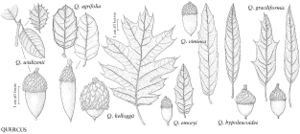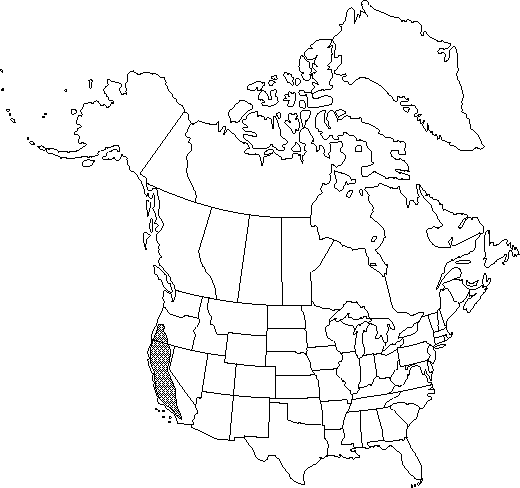Difference between revisions of "Quercus kelloggii"
Pacif. Railr. Rep. 6: 28, 89, fig. 6. 1859.
imported>Volume Importer |
imported>Volume Importer |
||
| Line 63: | Line 63: | ||
|publication year=1859 | |publication year=1859 | ||
|special status=Endemic;Illustrated | |special status=Endemic;Illustrated | ||
| − | |source xml=https:// | + | |source xml=https://bitbucket.org/aafc-mbb/fna-data-curation/src/2e0870ddd59836b60bcf96646a41e87ea5a5943a/coarse_grained_fna_xml/V3/V3_222.xml |
|genus=Quercus | |genus=Quercus | ||
|section=Quercus sect. Lobatae | |section=Quercus sect. Lobatae | ||
Revision as of 21:47, 5 November 2020
Trees, deciduous, to 25 m. Bark dark brown to black, ridges broad, irregular. Twigs brown to red-brown, (1.5-)2-3.5 mm diam., glabrate. Terminal buds chestnut brown, ovoid, 4-10 mm, glabrous or with scales ciliate on margins. Leaves: petiole 10-60 mm, glabrous to densely pubescent. Leaf blade ovate or broadly elliptic to obovate, 60-200 × 40-140 mm, base cordate to obtuse, occasionally rounded, margins with 7-11 lobes and 13-45 awns, lobes acute to distally expanded, separated by deep sinuses, apex acute; surfaces abaxially glabrous with small axillary tufts of tomentum to densely pubescent, adaxially glabrous to minutely pubescent, veins raised on both surfaces. Acorns biennial; cup saucer-shaped to deeply bowl-shaped, 13-27 mm high × 20-28 mm wide, covering 1/2-2/3 nut, outer surface glabrous to sparsely puberulent, inner surface 1/3 to completely pubescent, scales more than 4 mm long, attenuate or acuminate to acute, smooth, occasionally tuberculate near base of cup, tips loose, especially at margin of cup; nut oblong to broadly ellipsoid, 21-34 × 14-22 mm, puberulent, especially at apex, scar diam. 5.5-10.5 mm. 2n = 24.
Phenology: Flowering late spring.
Habitat: On slopes and valleys of hills and mountains
Elevation: 300-2400 m
Discussion
The abundant crops of acorns from Quercus kelloggii were at one time an important food source for Native Americans.
The species reportedly hybridizes with Quercus agrifolia (= Q. ×ganderi C. B. Wolf) and Q. wislizenii (= Q. ×morehus Kellogg).
Selected References
None.

